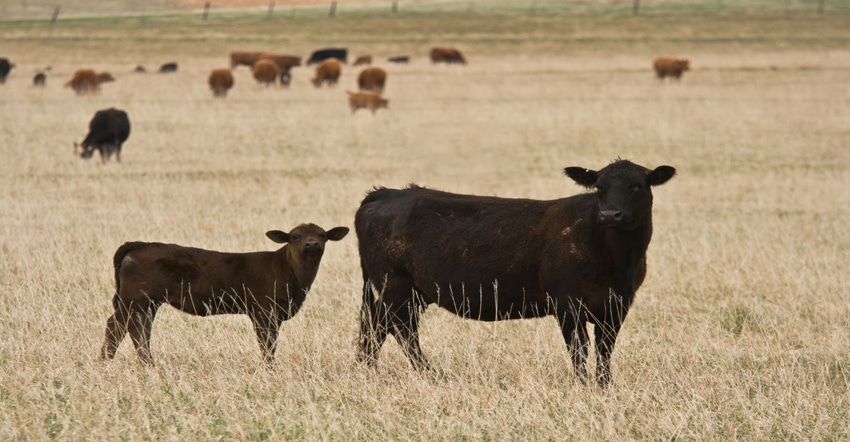Early weaning may be necessary for many producers this summer as drought conditions worsen.
July 18, 2022

Long-term drought, May moisture, extreme heat and prevailing southern winds for the past several weeks have resulted in a flash drought. Many Oklahoma cow-calf operations are facing the reality of a depleted forage base right now. One potential solution is early weaning calves. Early weaning calves has the primary benefit of improving cow condition for rebreeding, especially when forage is limited.
When the nutritional demands of lactation are removed by early weaning there is significant reduction (15 – 20%) in the dietary energy needed by cows. Early weaning can initiate postpartum estrus, improve pregnancy rates, lower culling rates and result in higher weaning weights and cow productivity in following years.
Early weaning is most beneficial in years when pasture production is inadequate to support herd nutritional requirements. From the standpoint of range management, it reduces the risk of overgrazing and accordingly adds to the long-term health of the grazing system.
The average age of beef calves weaned in the United States is a little over 7 months of age. Calves can be weaned as early as 60 days of age.
However this requires intensive calf management and is not practical under most ranch conditions. At two months of age calves are still functionally pre-ruminants relying primarily on milk and consuming a small amount of forage. By 3 – 4 months of age the rumen becomes functional and calves are capable of consuming significant amounts of forage.
Best management practices for early weaning
The first two weeks post weaning are a critical time for calves to overcome weaning stress, maintain health and become nutritionally independent by learning to consume feed. Manage according the following:
Lower the risk of health problems and promote calf growth by giving proper vaccinations prior to weaning. Castrate and dehorn calves when giving pre-weaning vaccinations. This will permit calves to deal with the stress of these management practices while still nursing.
Manage to get calves accustomed to a feed bunk and water trough as quickly as possible. Creep feeding calves for a few weeks prior to weaning will ease the transition and get calves accustomed to concentrate feed. Maintain access to good quality, clean water at all times.
Fence line wean if possible. This eliminates stress by permitting calves to remain in the same pasture where they are familiar with feed, water, shade, etc.
The feed ration is critical because feed intake is initially low after weaning. It needs to be highly palatable, nutrient dense, dust free and include a complete vitamin and mineral supplement.
After calves are over the stress of weaning they should begin to consume approximately 3% of their body weight in high quality feed each day. Feed intake variation or depressed appetite can indicate health problems.
Source: Oklahoma State University, which is solely responsible for the information provided and is wholly owned by the source. Informa Business Media and all its subsidiaries are not responsible for any of the content contained in this information asset.
You May Also Like



